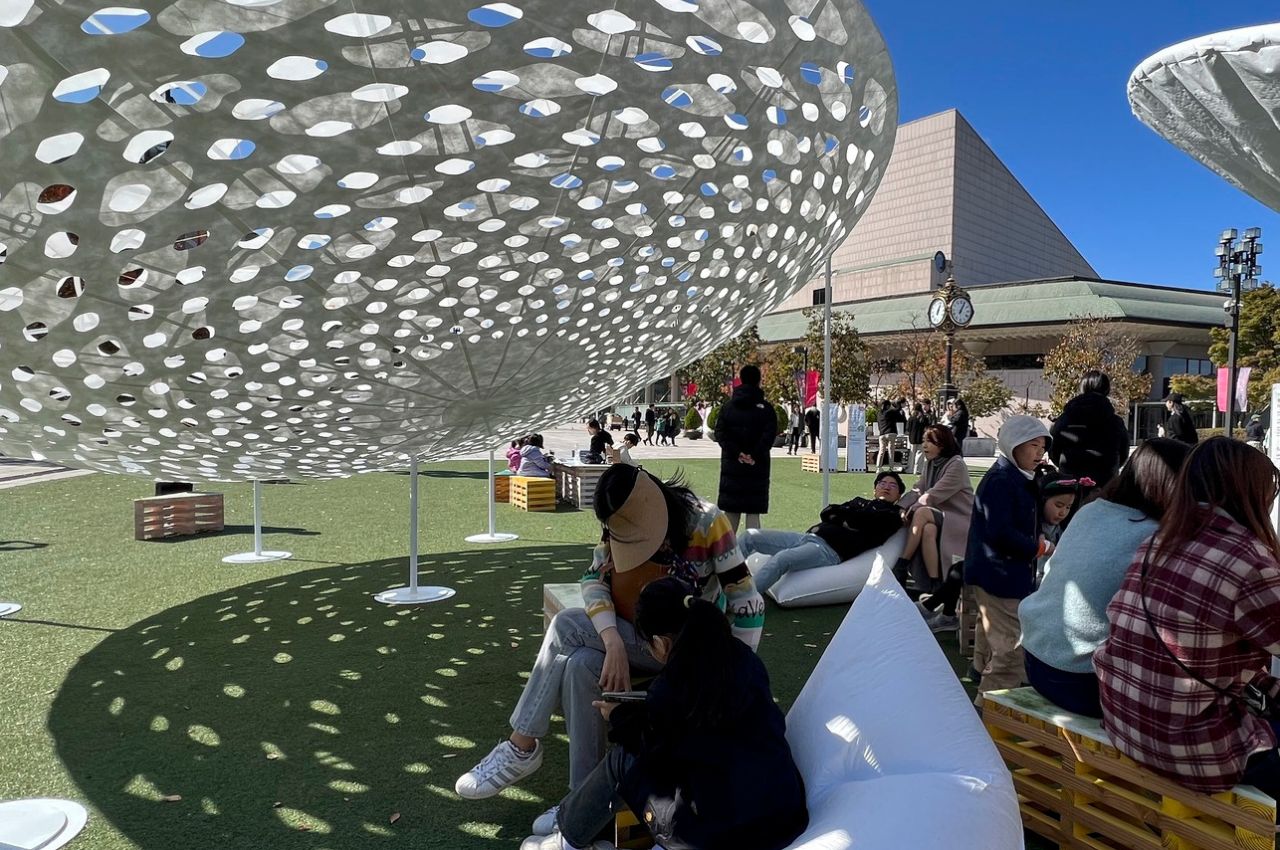
Located in South Korea, the Volvo Circle Pavilion presents a unique approach to outdoor spaces. Built on the principles of komorebi, or the phenomenon where light passes through the gaps in leaves, this pavilion allows people to gather in its shade, while using Tyvek facades with leaf-shaped holes that allow the sun to weave through, mimicking the feeling of basking under a tree!
Designer: Studio Heech
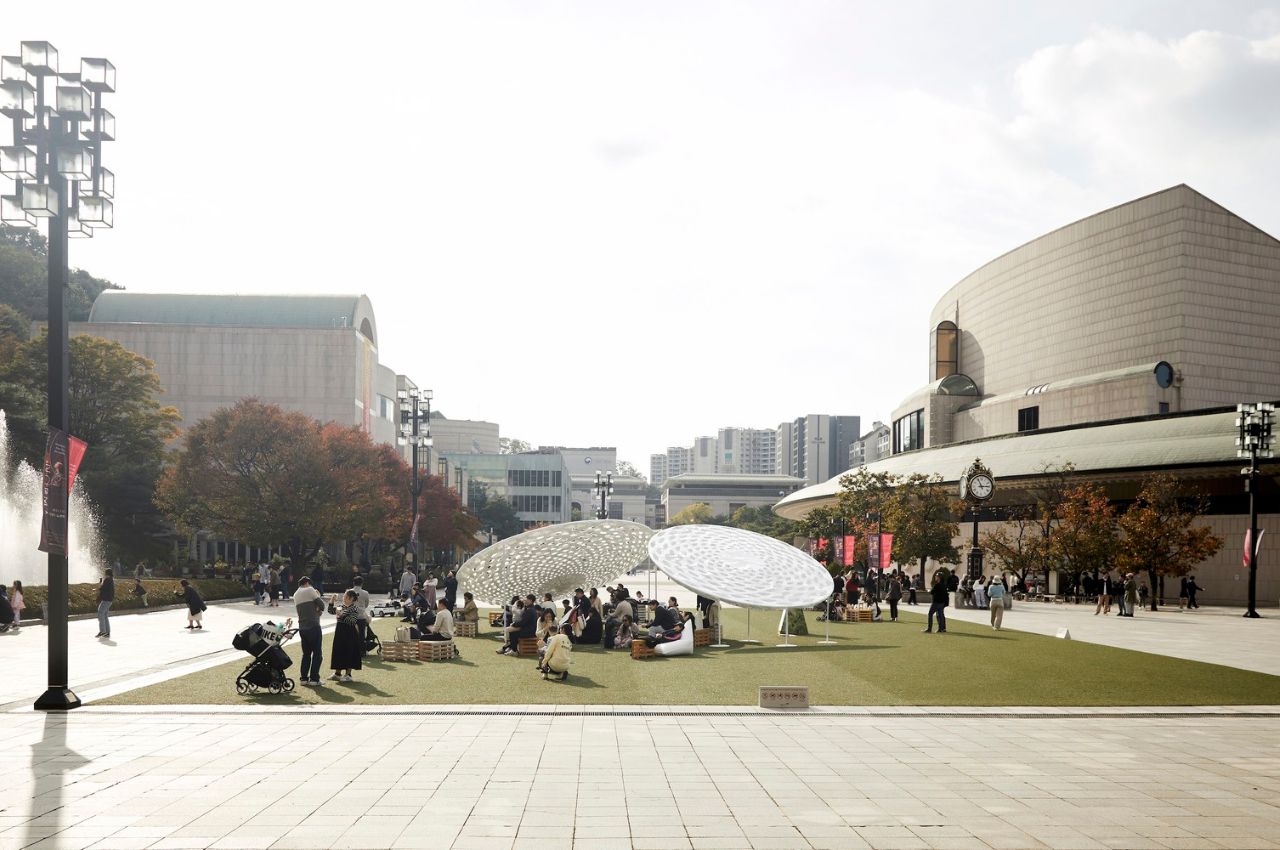
The Volvo Circle Pavilion’s most striking feature lies in its innovative use of materials. The pavilion is enveloped in a paper-thin and light Tyvek covering, a waterproof material with physical properties akin to paper. This Tyvek covering, far from being a mere aesthetic choice, serves as a canvas for intricate patterns. Crafted by cutting the material with precision, these patterns cast three-dimensional shadows reminiscent of dappled sunlight filtering through leaves in a forest—a captivating metaphor for the play of light, or “Komorebi.” (Japanese word for sunlight, which is filtered through the leaves of the trees.)
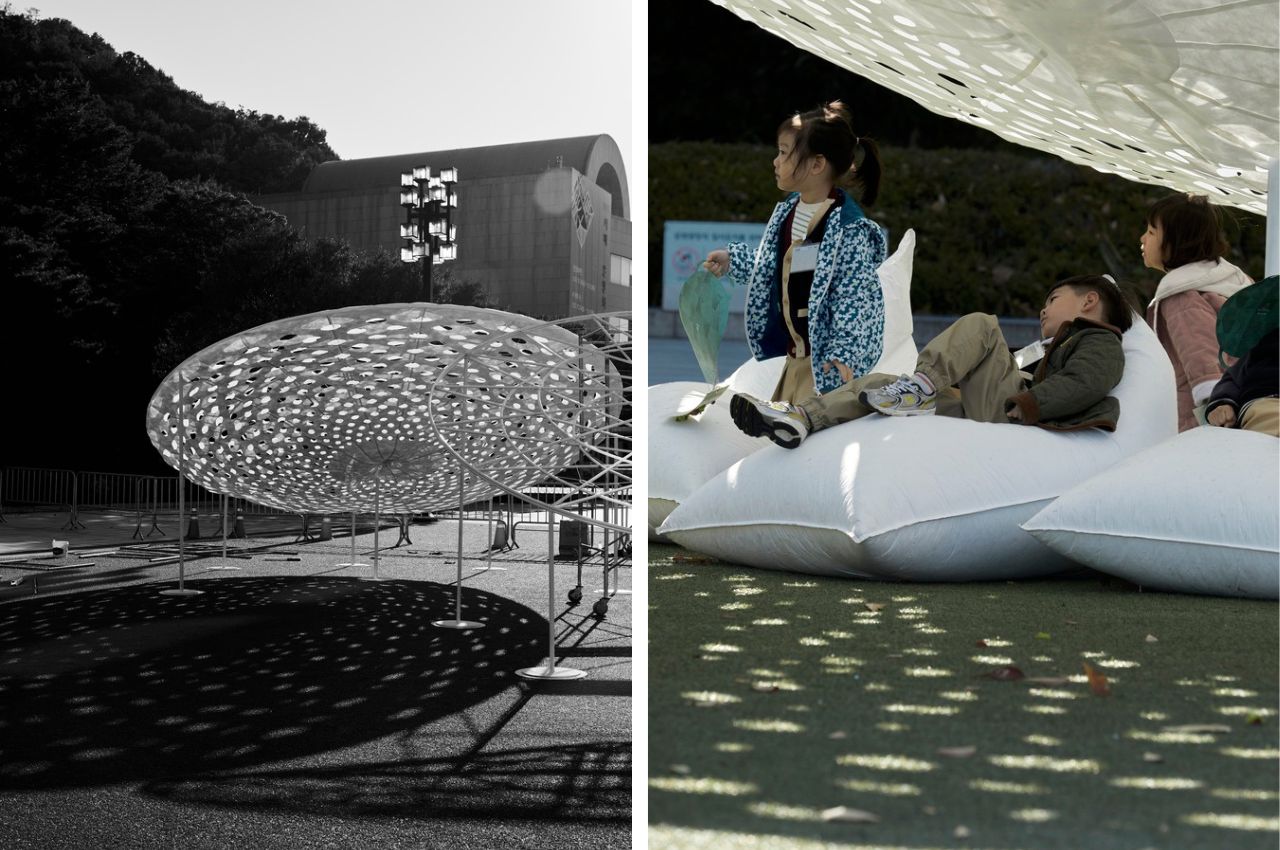
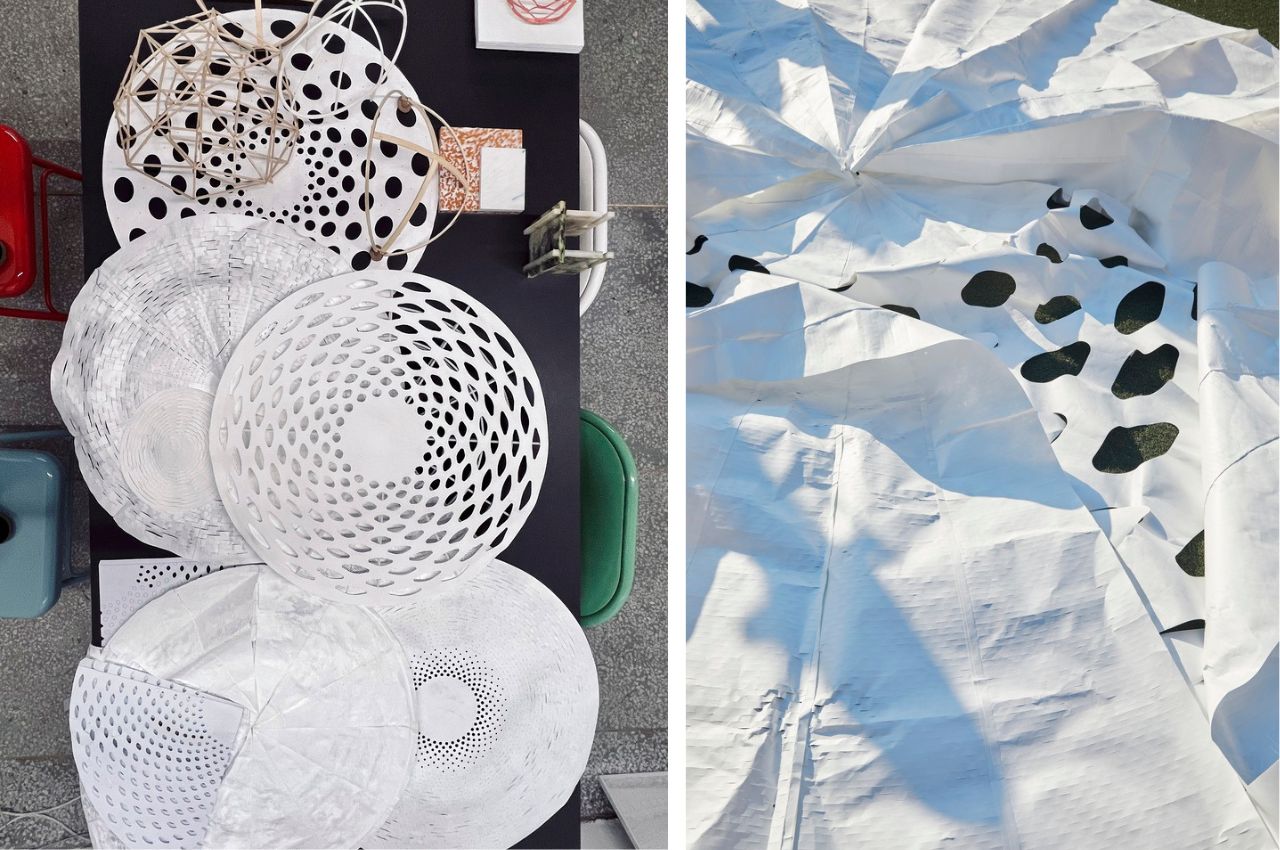
What sets this Pavilion apart is its commitment to a circular and sustainable material lifecycle. The Tyvek covering, after serving its purpose, is dismantled and repurposed into recycled plastic boards for public furniture. This innovative approach to recycling not only minimizes waste but also breathes new life into materials that would otherwise end up in landfills.
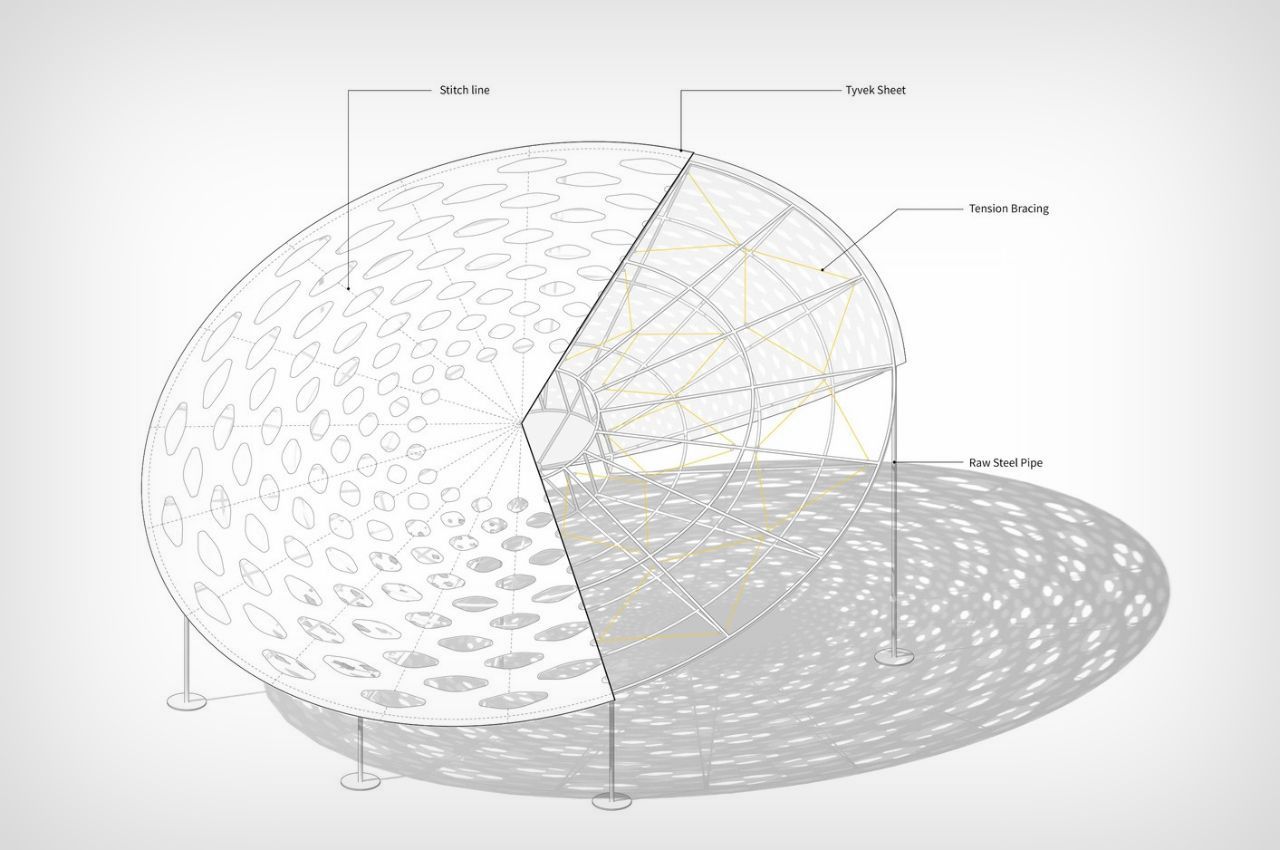
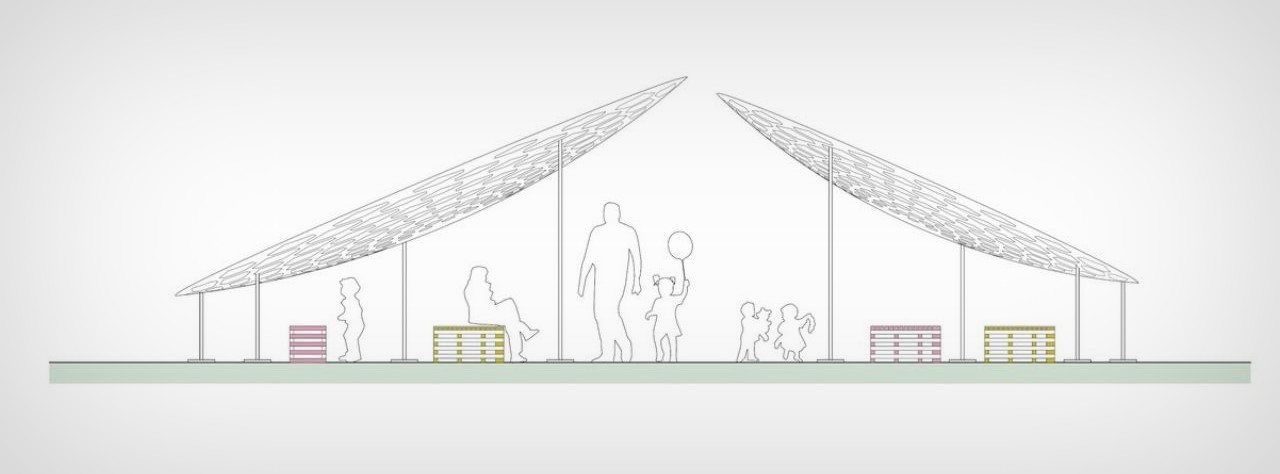
The creation of the Pavilion was a collaborative effort that brought together craftsmen, engineers, and makers from various fields, united by a shared ambition for sustainability. Front INC, renowned for its expertise in crafting minimal and lightweight structures, collaborated with DSLSM, known for its eco-friendly works using Tyvek material. Together, they orchestrated a symphony of sustainable design and material innovation.
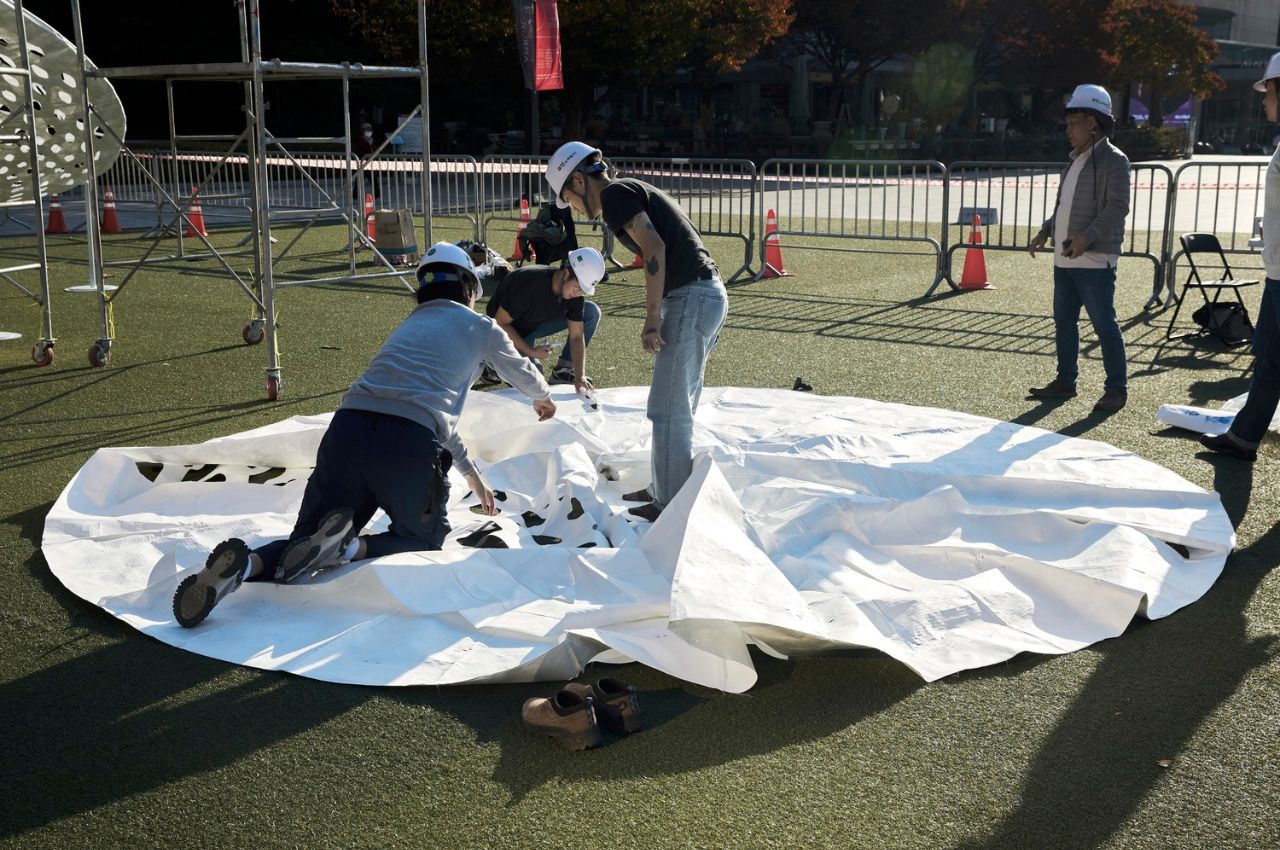
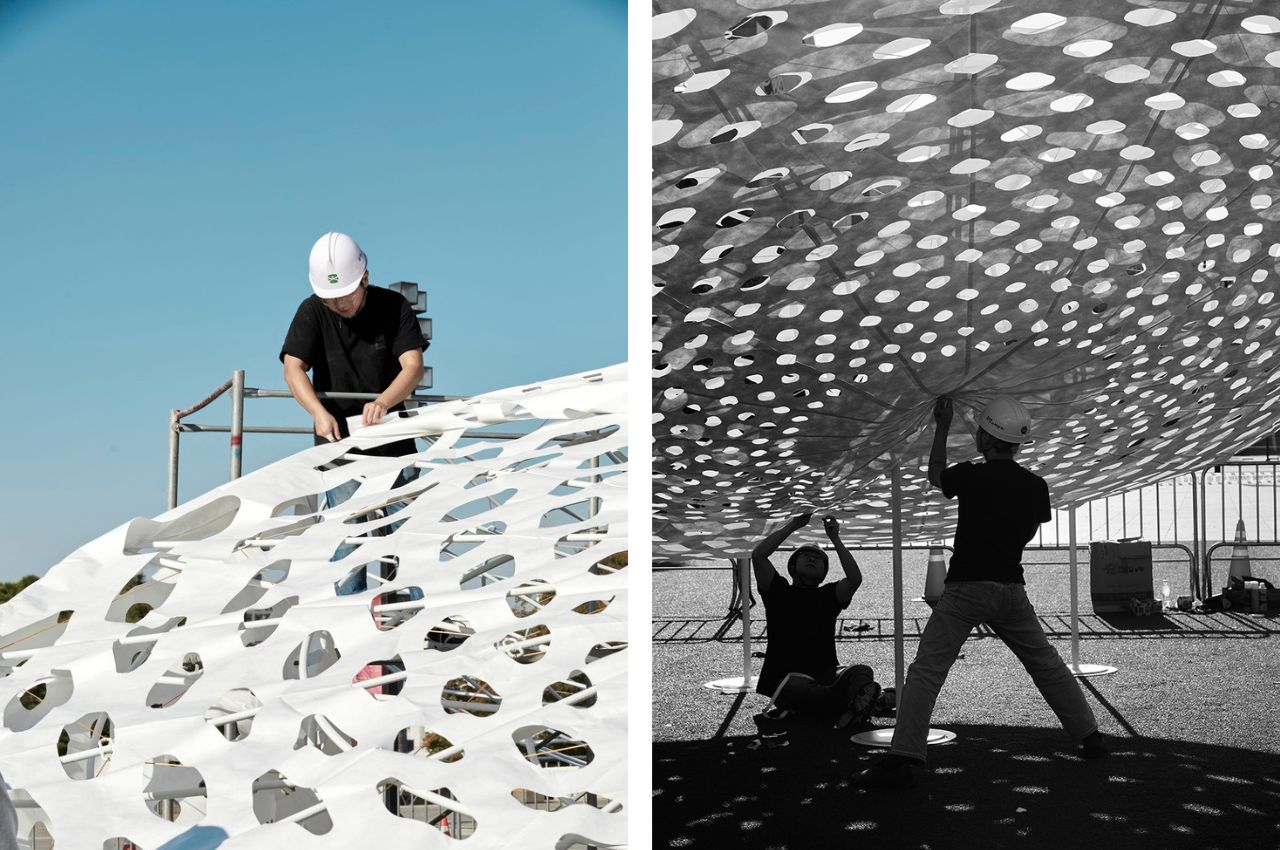
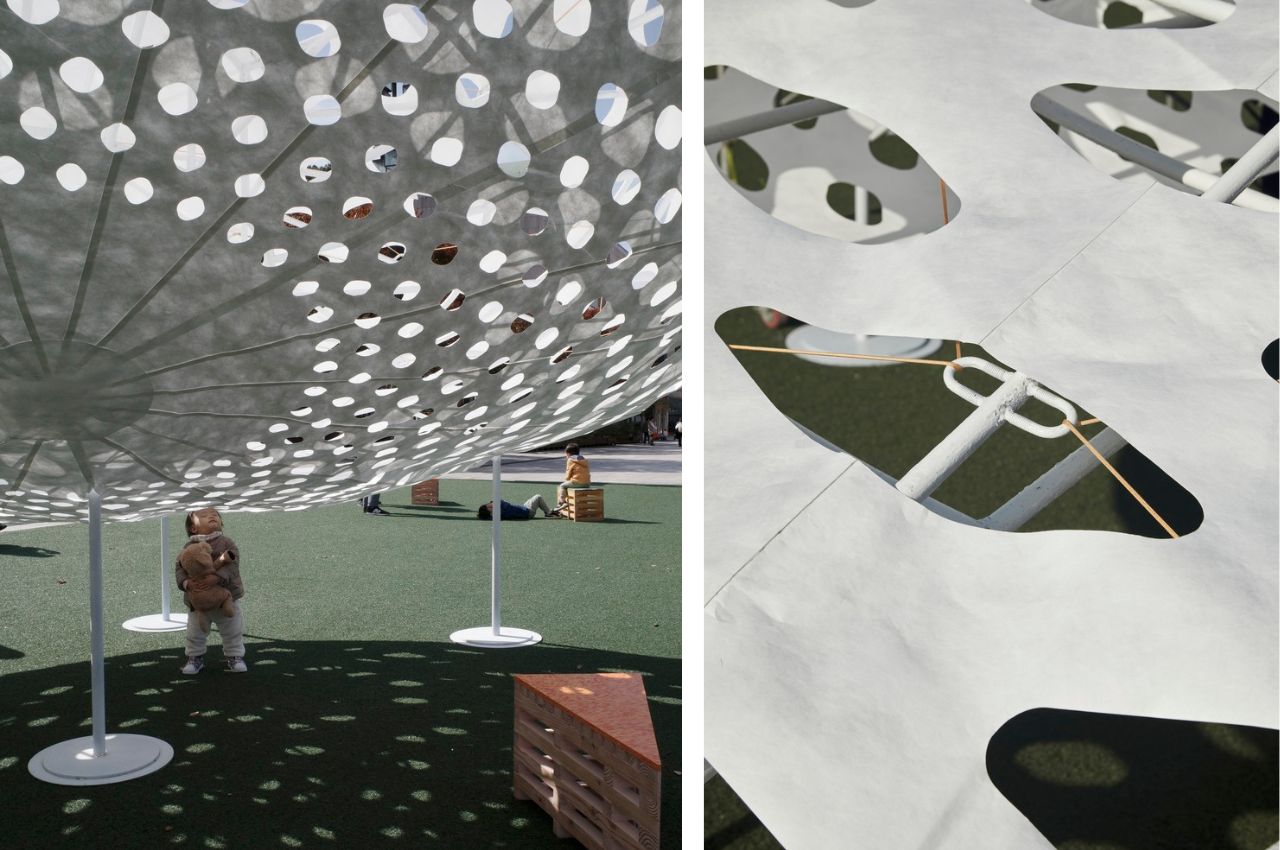
A key strategy employed in the construction of the pavilion was prefabrication, where almost all elements were fabricated off-site and then assembled on location. This approach not only streamlined the construction process but also significantly reduced the environmental impact and carbon emissions associated with traditional on-site construction methods. This is an upcoming method of construction as the contemporary methods are the most significant contributors to GHG emissions, accounting for one-third of global carbon emissions, one-third of global resource consumption, and 40% of global energy consumption.
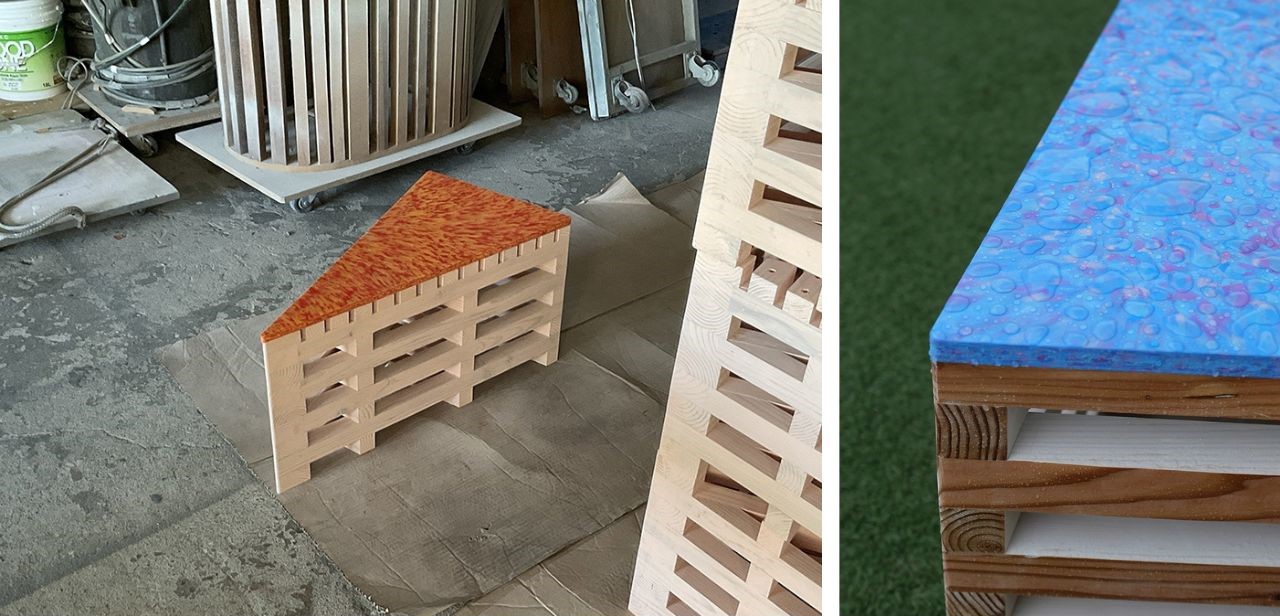
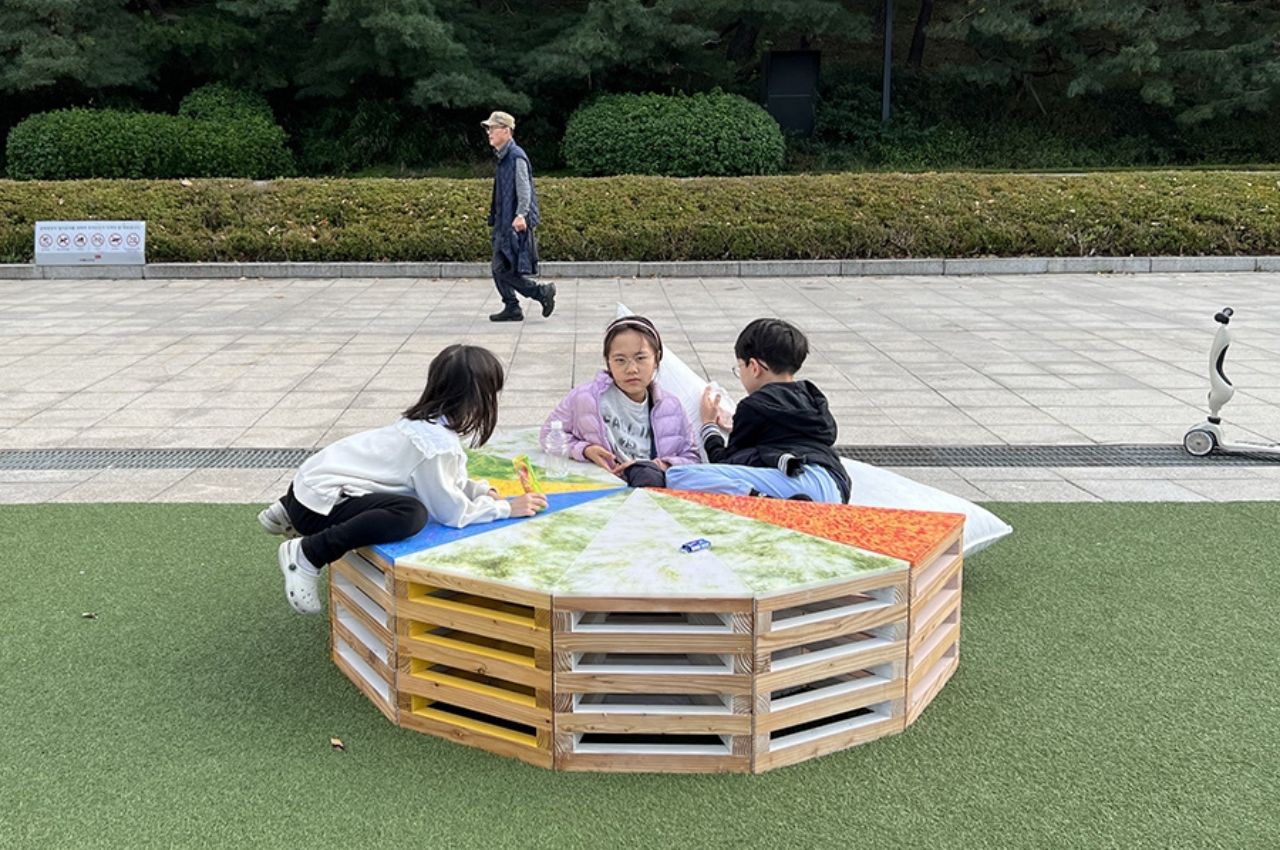
The commitment to sustainability doesn’t end with the pavilion’s construction. The minimal steel structure that supports the pavilion is disassembled and reused, ensuring that every element finds a new purpose. Puzzle benches, crafted from forged and neglected structural wood, are fully recycled and generously donated to elementary schools, daycare centers, and children’s libraries in the Seoul area. This goes beyond mere recycling; it’s a commitment to meaningful reuse that benefits the community. The modular design of these benches facilitates efficient stacking and transportation of larger pieces, contributing to a reduction in carbon emissions. Additionally, their water-resistant features and chamfered edges make them ideal for children.
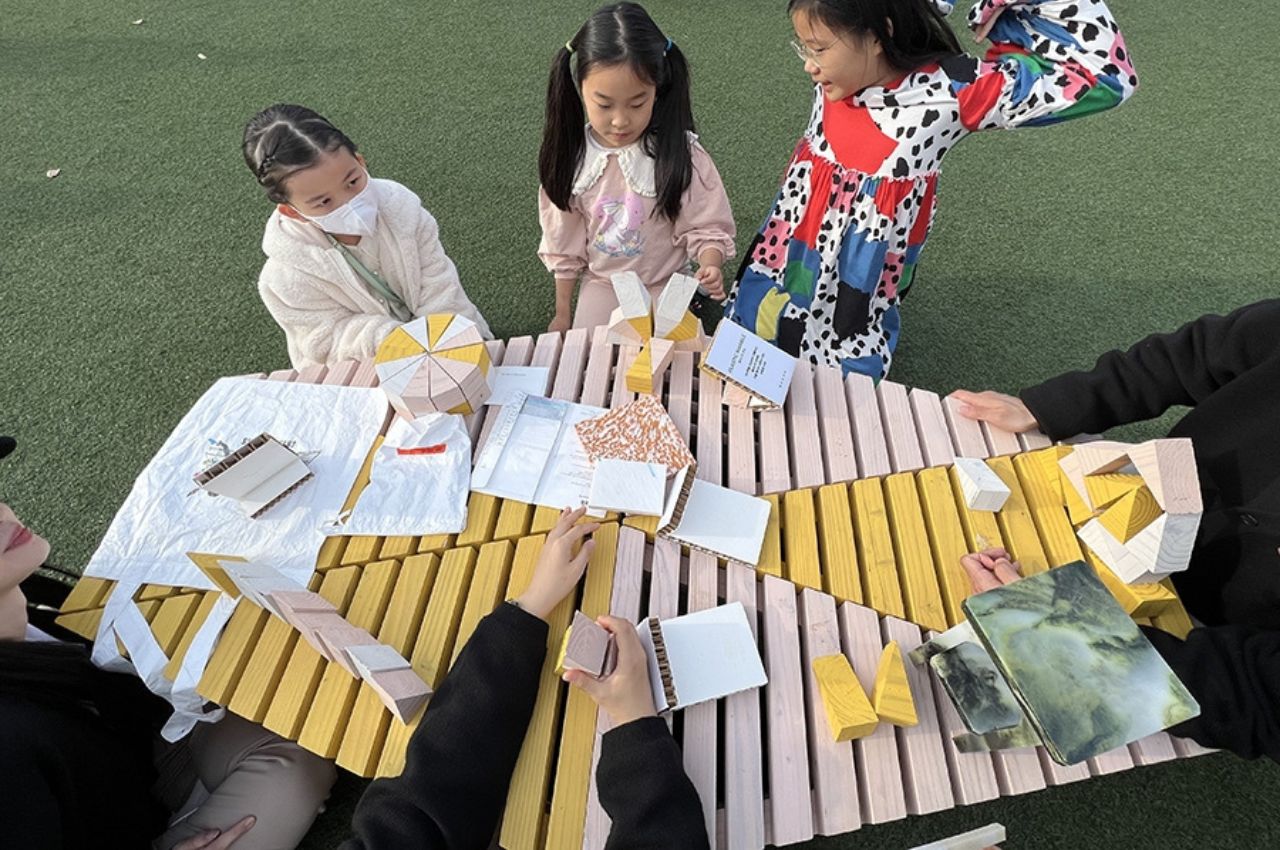
The Volvo Circle Pavilion in South Korea stands as a beacon of sustainable architecture, showcasing that beauty and environmental responsibility can coexist harmoniously. From its lightweight Tyvek covering to the recycled plastic boards and donated puzzle benches, every element of this pavilion is a testament to a circular and eco-conscious approach to design and construction. As we celebrate the Volvo Circle Pavilion, we are reminded that the future of architecture lies not just in grand designs but in the thoughtful and sustainable use of materials that shape our built environment.
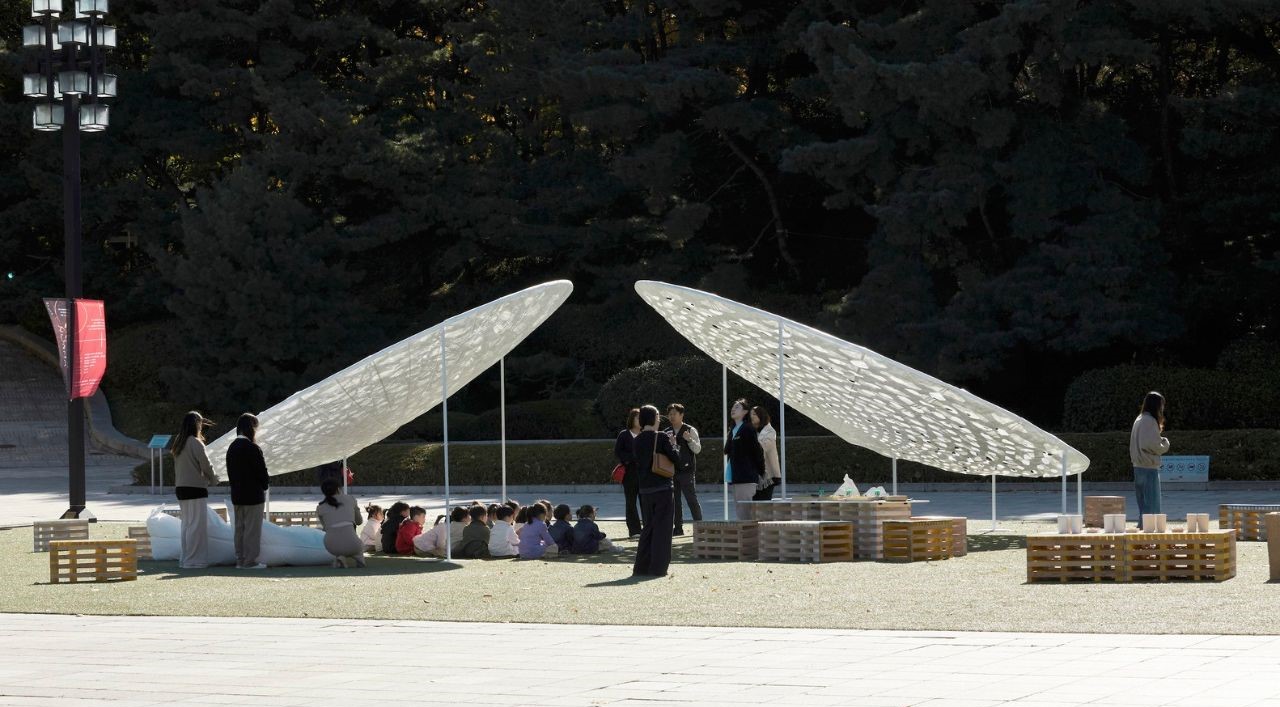
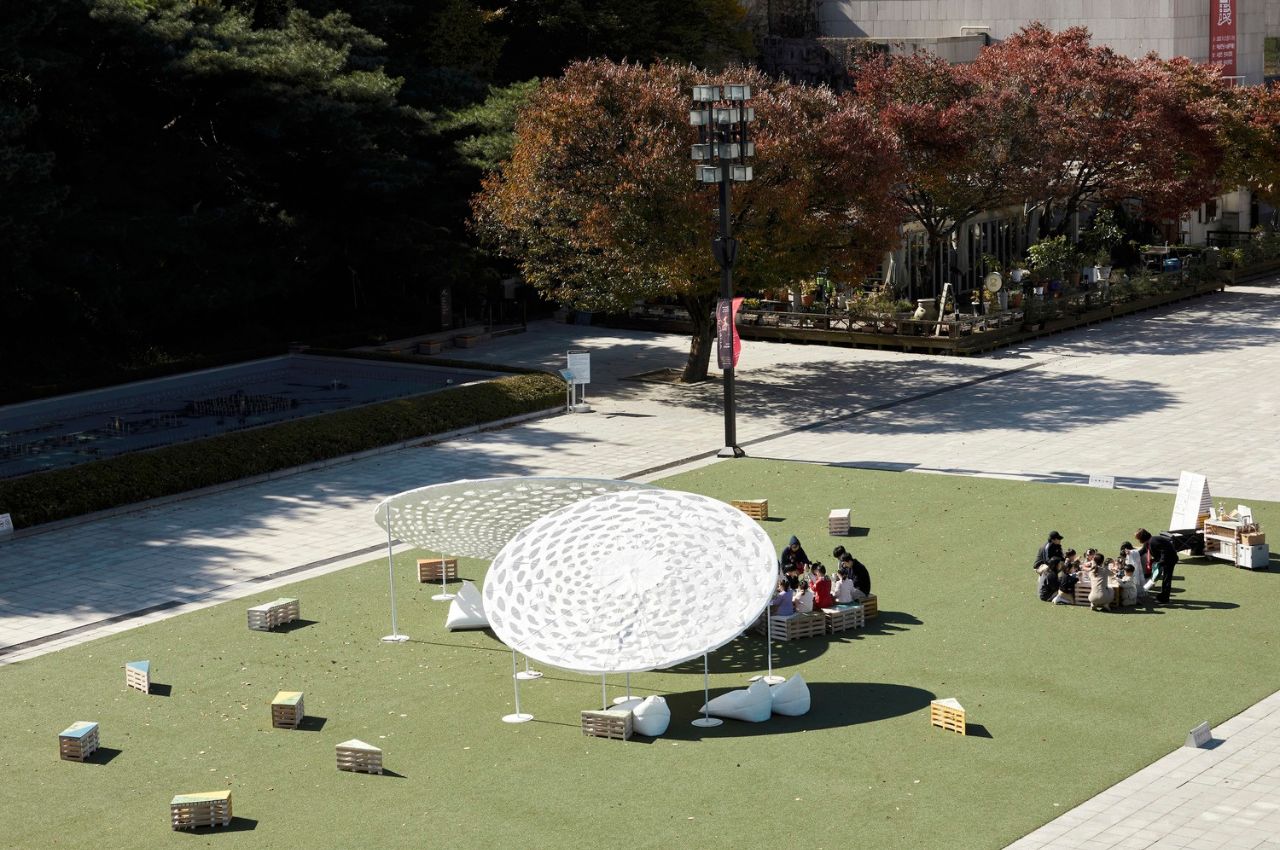
The post The Volvo Circle Pavilion uses perforated Tyvek to mimic the feeling of sitting under a tree first appeared on Yanko Design.
0 Commentaires